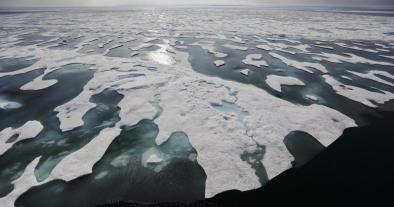How rare were the unusually high temperatures around the North Pole in November–December 2016 and how were they influenced by anthropogenic climate change?

Mid-November saw an early winter “heat wave” with the temperature on November 11 reaching -7 ºC (19 ºF) – that is 15 ºC (27 ºF) above normal for the time of year. The monthly mean November temperature was 13 ºC (23 ºF) above normal on the pole. Temperatures in this region declined slightly after that but remained well above normal.
...
To quantify how rare the event was, we computed the November-December averaged temperature around the North Pole (80–90 ºN) in the ERA-interim reanalysis augmented with the ECMWF analysis and forecast up to December 25 and persistence up to December 31.
...
The observations show that November–December temperatures have risen on the North Pole, modulated by decadal North Atlantic variability. For all phases of this variability a warm event like the one of this year would have been extremely unlikely in the climate of a century ago. The probability was so small it is hard to estimate, but less than 0.1 percent per year. The model analyses show that the event would also have been extremely unlikely in a world without anthropogenic emissions of greenhouse gases and aerosols, attributing the cause of the change to human influences. This also holds for the warm extremes caused by the type of circulation of November 2016. If nothing is done to slow climate change, by the time global warming reaches 2 ºC (3.6 ºF) events like this winter would become common at the North Pole, happening every few years.
Related Content



